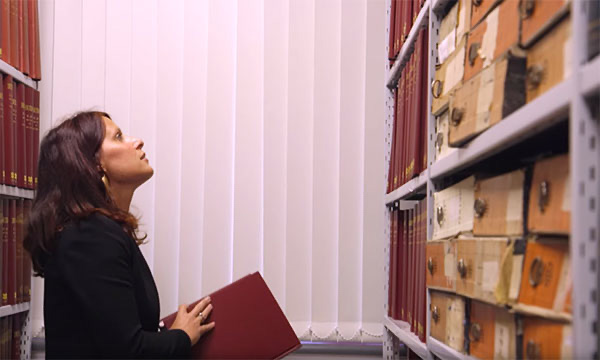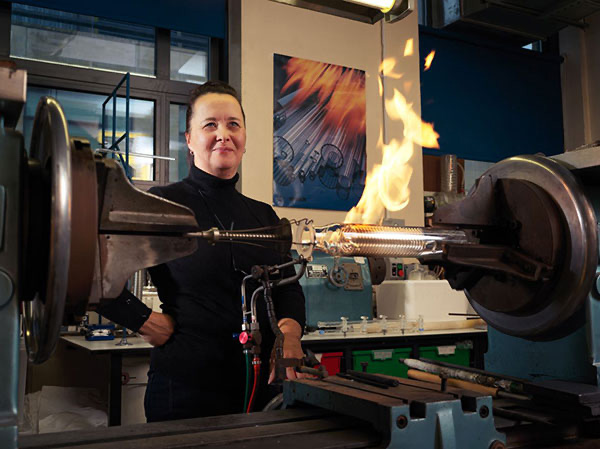There have been all kinds of “voices” in the history of Western civilization. Perhaps the loudest voice is that of monomaniacs, who always claim that behind the appearance of the many is the one. If we illustrate the West, and at its roots, the intersection of Athens and Jerusalem, we see the origins of this monomania. Plato’s realm of ideas was supposed to explain everything encountered in our daily lives. His main student and rival, Aristotle, has his own competing explanation, based in biology instead of mathematics.
These monomanias in their modern counterpart in ideologies. In communism, the key to have everything is class and the resulting class struggles. Nazism revolves around race and racial conflict.
In our own era, the era of scientism, we have the idea of god replaced with Stephen Hawking’s “mind of god,” Leon Lederman’s The God Particle and KAKU Michio’s The God Equation. In the 2009 film, Angels & Demons, there’s a senior Vatican official, played by Ewan McGregor, who is absolutely outraged by the blasphemous phrase, “the god particle.”
Currently, the monomania impetus continues full-force. For example, Professor Seth Lloyd of MIT tells us that reality is the cosmos and not chaos, because all of reality together is a computer. His MIT colleague, Max Tegmark, argues in his books that the world is not explained by mathematics, but rather is mathematics. Perhaps the climax of this kind of thinking is given to us by the essay “Everything Is Computation” by Joscha Bach:
These days we see a tremendous number of significant scientific news stories, and it’s hard to say which has the highest significance. Climate models indicate that we are past crucial tipping points and irrevocably headed for a new, difficult age for our civilization. Mark van Raamsdonk expands on the work of Brian Swingle and Juan Maldacena and demonstrates how we can abolish the idea of spacetime in favor of a discrete tensor network, thus opening the way for a unified theory of physics. Bruce Conklin, George Church, and others have given us CRISPR/Cas9, a technology that holds promise for simple and ubiquitous gene editing. “Deep learning” starts to tell us how hierarchies of interconnected feature detectors can autonomously form a model of the world, learn to solve problems, and recognize speech, images, and video.
It is perhaps equally important to notice where we lack progress: Sociology fails to teach us how societies work; philosophy seems to have become infertile; the economic sciences seem ill-equipped to inform our economic and fiscal policies; psychology does not encompass the logic of our psyche; and neuroscience tells us where things happen in the brain but largely not what they are.
In my view, the 20th century’s most important addition to understanding the world is not positivist science, computer technology, spaceflight, or the foundational theories of physics.
It is the notion of computation. Computation, at its core, and as informally described as possible, is simple: Every observation yields a set of discernible differences.
These we call information. If the observation corresponds to a system that can change its state, we can describe those state changes. If we identify regularity in those state changes, we are looking at a computational system. If the regularity is completely described, we call this system an algorithm. Once a system can perform conditional state transitions and revisit earlier states, it becomes almost impossible to stop it from performing arbitrary computation. In the infinite case that is, if we allow it to make an unbounded number of state transitions and use unbounded storage for the states—it becomes a Turing machine, or a Lambda calculus, or a Post machine, or one of the many other mutually equivalent formalisms that capture universal computation.
Computational terms rephrase the idea of “causality,” something that philosophers have struggled with for centuries. Causality is the transition from one state in a computational system to the next. They also replace the concept of “mechanism” in mechanistic, or naturalistic, philosophy. Computationalism is the new mechanism, and unlike its predecessor, it is not fraught with misleading intuitions of moving parts.
Computation is different from mathematics. Mathematics turns out to be the domain of formal languages and is mostly undecidable, which is just another word for saying “uncomputable” (since decision making and proving are alternative words for computation, too). All our explorations into mathematics are computational ones, though. To compute means to actually do all the work, to move from one state to the next.
Computation changes our idea of knowledge: Instead of justified true belief, knowledge describes a local minimum in capturing regularities between observables. Knowledge is almost never static but progresses on a gradient through a state space of possible worldviews. We will no longer aspire to teach our children the truth, because, like us, they will never stop changing their minds. We will teach them how to productively change their minds, how to explore the never-ending land of insight.
A growing number of physicists understands that the universe is not mathematical but computational, and physics is in the business of finding an algorithm that can reproduce our observations. The switch from uncomputable mathematical notions (such as continuous space) makes progress possible. Climate science, molecular genetics, and AI are computational sciences. Sociology, psychology, and neuroscience are not: They still seem confused by the apparent dichotomy between mechanism (rigid moving parts) and the objects of their study. They are looking for social, behavioral, chemical, neural regularities, where they should be looking for computational ones.
Everything is computation.
Know This: Today’s Most Interesting and Important Scientific Ideas, Discoveries, and Developments, John Brockman (editor), Harper Perennial, 2017, pages 228-230.
Friedrich Nietzsche rebelled against this type of thinking the most profoundly. If scientism represents the modern, then Nietzsche was the prophet of postmodernism. Nietzsche’s famous phrase, “God is dead.” is not about a creator or divinity, but rather finality itself. There is no final explanation.


